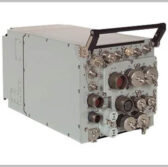IBM and NASA, in partnership with Oak Ridge National Laboratory, have developed an open source artificial intelligence foundation model designed to address challenges in short-term weather and long-term climate projection.
The weather and climate foundation model was pre-trained on 40 years of Earth observation data from NASA’s Modern-Era Retrospective Analysis for Research and Applications, Version 2, making it ideal for global, regional and local weather studies, IBM said Monday.
Compared to existing AI models, MERRA-2 can be applied to more applications, including detecting and predicting severe weather patterns, enhancing the spatial resolution of global climate simulations and improving how physical processes are represented in numerical weather and climate models.
“This model is well-suited to help us understand meteorological phenomena such as hurricanes or atmospheric rivers, reason about future potential climate risks by increasing the resolution of climate models, and finally inform our understanding of imminent severe weather events,” said Juan Bernabe-Moreno, director of IBM Research Europe and IBM’s accelerated discovery lead for climate and sustainability.
According to a paper published on arXiv, IBM and NASA’s model accurately reconstructed global surface temperatures in one experiment using a random sample of only five percent original data, suggesting that it can address problems in data assimilation.
The foundation model comes with two versions that tackle climate and weather data downscaling and gravity wave parameterization.
All versions are available for download on Hugging Face.





